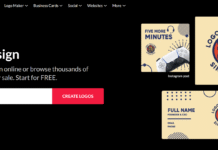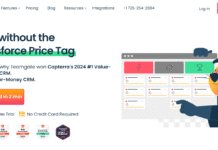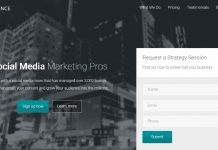An AI global startup faces two simultaneous imperatives: deliver unmistakable value to the first paying users and design the company so that it can travel across borders without breaking. Many founders master one of these imperatives but struggle with the other. Teams that only optimize for speed often create brittle systems that collapse when localization, privacy, or workload spikes arrive. Teams that only optimize for compliance and process lose momentum before product-market fit hardens. The purpose of this guide is to help an AI global startup balance velocity with robustness from day one, so each new market compounds rather than dilutes momentum.
Artificial intelligence changes the geometry of expansion. Models convert previously fixed costs into variable costs and allow a small team to produce documentation, support, and experimentation at a pace that once required a regional office. Yet the same capabilities can magnify error and risk if they are not instrumented. An AI global startup should treat models, prompts, retrieval layers, and data contracts as part of a production system, with evaluation and cost controls in the loop. When this discipline is present, the company can move faster because every iteration is observable and reversible.
Cross-border success demands a plan for language, culture, and regulation that is more than a checklist. Language coverage is the obvious start, but culturally aware UX, pricing psychology, payment rails, and procurement patterns decide whether users trust a product enough to deploy it at work. An AI global startup must model these constraints explicitly. That means building a simple framework for market selection, stating the assumptions about data availability, competitive intensity, and willingness to pay, and then updating those assumptions as the company runs tests. The goal is to avoid a one-size-fits-all rollout that burns cash in markets where the product’s wedge is weak.
Data is both asset and liability. An AI global startup should inventory which data truly creates advantage and which merely increases risk. Instrument consent and purpose limitation, minimize personally identifiable information, and define clear retention policies. If the value comes from retrieval over customer documents, make the retrieval layer policy-aware and auditable. If the value comes from behavioral signals across accounts, invest in anonymization and aggregation to unlock insights without storing raw identifiers. Decisions about data shape which countries are viable, which partners are necessary, and how quickly the company can ship new features.
Go-to-market mechanics still determine whether a product that demos well becomes a product that renews. The early choice between founder-led, partner-led, and product-led sales models should be deliberate. In some regions, a channel partner or local services firm is the only path into large enterprises. In others, bottom-up product-led growth is the cheapest way to seed accounts before an enterprise motion lands. An AI global startup will succeed faster if it documents the buying process by role, maps friction points to evidence, and designs pilots with clear acceptance criteria. When a customer’s security team asks about model provenance or incident response, the company needs artifacts ready, not promises.
Finally, expansion is an operating rhythm, not a single launch. Every new country should feel like a factory run: a standard brief, a repeatable localization pass, a predictable set of risks, and a learning loop that feeds the next country. That rhythm is easier to maintain when founders track a small set of metrics linked to unit economics: ramp time to first value, activation rate, retention by cohort, net revenue retention, and payback period. With this discipline, an AI global startup can compound advantages without overextending. For a deeper perspective on sequencing choices by region, review practical notes on global expansion trends for startups before planning your next market.
Why AI-First Is the Fastest Path to Global
From product to platform thinking
A narrow feature can win early adopters, but global scale requires a platform. The difference is not marketing; it is modularity. A platform separates ingestion, retrieval, models, orchestration, and evaluation so each component can change without breaking the whole. An AI global startup that designs for platform boundaries can swap providers, add languages, and adjust latency budgets by region. Teams that ship features without these seams often hit a ceiling when localization or compliance demands change the order of operations.
Differentiation through data and feedback loops
Defensibility is not in the model alone; it is in the loop that improves the model and the product. Capture structured feedback at the point of use: thumbs, reasons, task outcomes, and time-to-completion. Route this feedback into evaluation harnesses that run nightly on golden sets and production traces. An AI global startup that closes the loop turns every interaction into a small moat, because quality and relevance improve where competitors stagnate. The same loop informs pricing, packaging, and support as signals arrive from new regions.
Speed, cost, and quality trade-offs with AI
AI lets a small team ship more, but nothing is free. Latency, quality, and cost form a triangle that must be tuned per market and per workflow. Caching, batching, and retrieval reduce spend but can add complexity. Guardrails improve reliability but can slow responses. An AI global startup should publish target budgets per task, monitor tail latency, and define when to switch models or move inference closer to the edge. By making these trade-offs explicit, the company avoids hidden costs that surface only after volume grows in a new country.
Common myths about AI-led global growth
Several seductive myths derail expansion. The first is that a single general model can serve all segments; in reality, domain quality and latency expectations vary widely. The second is that translation alone solves localization; cultural nuance and compliance often matter more. The third is that pricing can be copied from incumbents; willingness to pay shifts by industry, integration depth, and perceived risk. An AI global startup earns speed by confronting these myths early and encoding the answers in its playbooks, not in ad-hoc decisions at the edge.
Market Selection and Sequencing Across Borders
TAM, SAM, and SOM with AI-adjusted assumptions
An AI global startup should size markets with more than top-down estimates. Start with TAM to frame the ceiling, but translate it into SAM by filtering for segments where data access, latency budgets, and procurement paths match your stack. Convert SAM to SOM by modeling what a small team can win given channel capacity and local competition. Use real signals from your product’s telemetry to refine assumptions, such as activation rate by language or time-to-value by use case. When forecasts drift from reality, change the inputs, not the narrative.
Data availability as a market filter
The best early markets are not always the largest; they are the ones with accessible and useful data. If value depends on retrieval over customer documents, prioritize countries where target industries can export data in compliant formats. If value relies on public datasets, rank markets by coverage, freshness, and licensing. An AI global startup should test ingestion pipelines with sample corpora from each candidate market to surface schema issues, PII exposure, and cost per query. Make data availability a go or no-go criterion, because model quality and customer trust collapse without it.
Competitive landscapes and moats by region
Regional moats look different from global ones. In some countries, distribution is the moat, not the feature set. In others, compliance credentials or in-country hosting unlock mid-market and enterprise buyers. Map incumbents by wedge, then ask where an AI global startup can win with speed, price, or quality. If incumbents lead on integrations, win on workflow depth. If they lead on professional services, win on automation and time-to-value. Document a three-sentence thesis per market that names your wedge, the proof you will produce, and the risks you accept.
Entry sequencing: beachheads, adjacencies, and timing
Sequencing is a portfolio problem. Choose one beachhead where you can show undeniable outcomes within one quarter, then expand to adjacencies that share language, regulations, and buyer profiles. An AI global startup should plan two launch waves per year, each with a clear objective and a stop-loss rule. If a wave misses activation or payback targets, pivot or pause before the next wave starts. By treating timing as an operating constraint, you avoid spreading resources thin across too many half-launched countries.
Localization as a System, Not a Project
Language models and culturally aware UX
Localization begins with language coverage but succeeds with cultural resonance. Adapt tone, examples, and idioms in prompts and UI text so users feel the product was made for them. An AI global startup can combine base models with locale-specific glossaries and retrieval over regional content to keep answers precise. Test with native reviewers who score clarity and politeness, and feed their feedback into evaluation sets. Instrument drop-offs at each step of the flow to see whether language or layout causes friction.
Legal, tax, and procurement localization
Regulations change the buying journey as much as they change the code. Local tax IDs, invoicing formats, and purchase order flows often decide whether a contract is signed this quarter or next year. An AI global startup should publish a procurement playbook per country that lists required documents, security questionnaires, and data protection addenda. Keep a shared repository of completed forms and prior approvals to accelerate future deals. Where resellers or distributors are common, package compliance evidence they can present without waiting for your team.
Pricing localization and willingness-to-pay testing
Willingness to pay depends on trust, risk, and perceived switching costs. Run discrete price tests across comparable cohorts using controlled offers and track downstream retention and expansion. An AI global startup should avoid copying a single price in local currency; instead, map value metrics to customer outcomes, then set guardrails for discounting by segment. Consider lighter entry tiers for markets with lower purchasing power, but protect margin by gating premium features or higher usage caps. Revisit price every quarter with real usage and cost data, not opinions.
Playbooks for multilingual support and documentation
Support that arrives fast in the customer’s language reduces churn. Build a knowledge base where retrieval can surface articles in the user’s locale, and add short video explainers when text-only guidance fails. An AI global startup should staff a follow-the-sun support pod with clear handoff rules, escalation paths, and a weekly review of the most costly tickets. Translate only what customers read most, then expand as traffic grows. Tie support metrics to renewal forecasts so leaders can see why investing in documentation pays back.
Data Strategy and Cross-Border Governance
Data residency, transfer, and sovereignty models
Residency rules shape architecture. Some buyers require data to stay in-country; others accept regional storage with strong encryption and audit. Choose between full in-country deployment, regional hubs with logical segregation, or a control-plane and data-plane split. An AI global startup should document which data elements cross borders and why, then offer alternatives where feasible. When rules tighten, you will be ready to present a compliant route without redesigning your stack.
PII handling, anonymization, and minimization
Collect only what you need, keep it only as long as necessary, and mask it whenever possible. Build a privacy layer that enforces minimization at ingestion, with automatic redaction for sensitive fields. An AI global startup should make anonymization reversible only under strict, audited conditions with dual control. When engineers reach for raw data to debug a tricky issue, require a time-limited access token and log the reason. These habits reduce risk without slowing delivery.
Consent, purpose limitation, and audit trails
Consent is not a checkbox; it is a contract with the user. Explain clearly how data is used to improve service and how users can opt out. Implement purpose limitation in code so datasets cannot be repurposed silently. An AI global startup needs evidence, not claims: immutable logs that link data, prompts, and outputs to the policy that allowed them. During enterprise sales, show sample audit trails that satisfy regulators and security officers.
Building a defensible data advantage
A data advantage is sustainable only if it is legal, ethical, and hard to copy. Curate proprietary datasets through partnerships, incentives, or user-generated content that competitors cannot easily replicate. An AI global startup should invest in labeling quality, feedback capture, and evaluation sets that match domain reality. As you scale, consider model distillation or embeddings tuned to your use cases so quality compounds even when others access similar models.
AI Architecture for Global Reliability
Reference stack: ingestion, retrieval, models, and orchestration
A simple reference helps every team talk the same language. Define four layers: ingestion for collecting and cleaning data, retrieval for context and control, models for reasoning and generation, and orchestration for routing and tools. An AI global startup should keep each layer replaceable behind an interface, with versioning and health checks. This separation lets you change a provider or model without reworking the entire product.
Latency budgets, caching, and edge inference
Global users judge your product by how it feels, not by your diagrams. Publish a latency budget per workflow that splits time across the network, retrieval, and model. Cache prompts and results where it is safe, and move inference to regional or edge locations for time-critical steps. An AI global startup must track p95 and p99 latency by country and degrade gracefully when networks are slow. If a feature cannot meet the budget, downgrade fidelity temporarily rather than failing hard.
Observability across prompts, tokens, and costs
You cannot optimize what you cannot see. Instrument prompts, retrieval hits, token counts, and cost per task. Tag events with market, customer segment, and model version. An AI global startup should run daily reports that join quality metrics with spend so product and finance make trade-offs together. When anomalies appear, trace them to the exact prompt or endpoint and fix the root cause before it spreads.
Resilience patterns and graceful degradation
Plan for outages and partial failures. Add timeouts, retries with jitter, and circuit breakers around external tools. Define fallbacks when models or retrieval stores are unavailable, such as switching to a smaller model, limiting features, or serving cached guidance. An AI global startup should rehearse incident scenarios quarterly across time zones so on-call staff, communications, and playbooks work under pressure. Customers forgive transparent, graceful degradation more than silent failure.
Product-Led Growth with AI Copilots
Where copilots belong in the journey
Copilots belong at moments where users struggle with blank-page syndrome or repetitive steps. Anchor them to a job-to-be-done with clear boundaries. An AI global startup should place copilots in onboarding to shorten time-to-value, in authoring to scaffold complex tasks, and in troubleshooting to reduce support tickets. When a copilot guesses, it must show its sources or reasoning so trust accumulates rather than erodes.
Task decomposition, guardrails, and acceptance criteria
Break workflows into atomic tasks so copilots can act deterministically. Define guardrails that restrict tools, data, and outputs to the user’s role and workspace. An AI global startup should write acceptance criteria like any other feature: inputs, outputs, and success thresholds. Use these criteria to drive both evaluation and user education, so the product and documentation stay aligned.
Evaluating quality: human, synthetic, and hybrid tests
Quality does not happen by accident; it is measured. Build golden sets from real user traces and expand them over time. Supplement with synthetic cases that stress edge conditions. An AI global startup should blend human review with automated scoring and require evaluation to pass before release. Track quality drift in production and roll back quickly when it appears.
Monetizing AI features without eroding margin
Users pay for outcomes, not tokens. Tie pricing to value metrics such as documents processed, issues resolved, or seats activated. Offer bundles that separate core product from premium automation and enterprise controls. An AI global startup should monitor gross margin at the feature level and cap expensive interactions with quotas, caching, or model selection. When costs move, update price or architecture rather than absorbing losses.
For go-to-market research and planning templates that complement these practices, review this primer on AI marketing for startups and adapt its channel selection ideas to each target country.
Go-to-market models that travel
Founder-led, partner-led, and product-led mixes
Choosing a single motion limits reach. Blend motions by segment and region. In early enterprise accounts, founder-led conversations compress discovery and de-risk pilots. In regulated markets, partner-led sales through local integrators unlock procurement and support. For self-serve entry, a product-led funnel builds qualified usage that later converts to enterprise plans. An AI global startup should document which motion applies to which buyer, then assign targets, playbooks, and handoffs so opportunities do not stall between teams.
Channel selection and enablement at scale
Channels amplify but also dilute control. Pick a small set of channel partners with overlapping industry focus, not just geography. Build enablement kits that include demo scripts, security answers, standard objections, and success criteria. Provide a shared pipeline dashboard and quarterly business reviews so performance is visible. An AI global startup must protect brand promise by certifying partners and auditing implementations, especially where agents or data handling can affect trust.
Enterprise motion: security reviews and pilots
Large buyers judge readiness through security posture and evidence. Package a pilot in three phases: integration, evaluation, and production criteria. Provide architecture diagrams, data flow maps, and incident playbooks up front. An AI global startup should schedule weekly checkpoints with buyers’ security and data teams, track open items, and time-box decisions. The faster a pilot moves to decision, the faster you can forecast capacity and cash.
Community, influencers, and developer ecosystems
Communities scale credibility. Host small clinics, office hours, and technical talks in local time zones. Identify a few credible practitioners per region and support them with early access, sample apps, and co-created content. An AI global startup benefits when community members share benchmarks, not slogans, and when local developers find answers without waiting for headquarters.
Pricing, packaging, and global monetization
Value metrics for AI features
Price outcomes, not infrastructure. Tie plans to units that customers understand, such as documents summarized, tickets resolved, or sessions assisted. Keep value metrics stable across markets while adjusting list prices for purchasing power. An AI global startup should avoid raw token-based pricing in customer-facing plans; reserve that for internal cost control and enterprise usage dashboards.
Regional price testing and elasticity
Run controlled tests by cohort and track conversion, retention, and expansion. In regions with lower willingness to pay, maintain perceived fairness by offering smaller bundles rather than deep discounts. An AI global startup needs guardrails for deviation from list price and a clear rule for when promotions end. Elasticity differs by industry; let data decide where to hold firm and where to expand entry points.
Bundles, tiers, and usage-based hybrids
Hybrid packaging reduces friction. Offer a free tier with rate limits, a growth tier with team features and basic controls, and an enterprise tier with advanced security and support. Add usage-based metering for compute-heavy features with caps to keep margin intact. An AI global startup should publish overage policies and provide in-product alerts so customers do not feel surprised by bills.
Billing, FX, taxes, and invoicing operations
Money movement breaks more launches than model quality. Support multiple payment methods, handle currency conversion, and calculate taxes per jurisdiction. Automate invoicing formats and purchase order flows where required. An AI global startup must reconcile revenue across gateways and geographies, and surface billing data in a finance dashboard that mirrors product usage to prevent disputes.
Sales and customer success across time zones
Territory design and account segmentation
Segment accounts by firmographic traits and potential value, not just region. Assign territories that respect language and workday overlap. An AI global startup should align marketing-qualified and product-qualified lead definitions so handoffs are clean. Publish account plans that list stakeholders, technical fit, and risks, then revisit them quarterly.
MEDDICC, SPICED, and enterprise frameworks
Pick one qualification framework and train the team. Use shared fields in the CRM so managers can inspect deals without custom notes. An AI global startup benefits from consistent discovery questions about data access, compliance, and integration, because these determine cycle time more than enthusiasm.
Implementation playbooks and time-to-value
A deal is not done until users adopt. Provide a 30-60-90 day plan with named owners, milestones, and acceptance criteria. Offer a sandbox, then move to production with guardrails. An AI global startup should measure time-to-first-value, feature activation, and cohort retention, and intervene when teams stall. Customers renew when outcomes are measured and visible.
Renewals, expansions, and health scoring
Health scores must predict actions. Combine product telemetry, support signals, and executive engagement into one score. Set thresholds that trigger success reviews or save motions. An AI global startup should run quarterly value reviews that tie features to outcomes, then present expansion paths that align with the customer’s roadmap.
Security, privacy, and responsible AI
Threat models for agents and endpoints
Agents introduce tool abuse and data leakage risks. Limit tool scopes, validate outputs, and restrict egress. Log tool invocations with reasons and results. An AI global startup should isolate inference services, rotate secrets, and treat prompts as code with review and versioning.
Model provenance, datasets, and SBOMs
Prove what runs in production. Keep signed model cards, dataset lineages, and software bills of materials. An AI global startup needs automated checks in CI to block unverified artifacts and to record evidence for audits. When customers ask about provenance, provide links, not slides.
Policy packs, red-teaming, and incident response
Bundle controls into policy packs by region. Red-team prompts and agents with realistic adversarial cases and record failures as tests. An AI global startup should rehearse incident playbooks twice a year and communicate clearly when issues arise. Trust grows when teams show discipline under stress.
Ethical guidelines, transparency, and user trust
Explain capabilities and limits in plain language. Provide opt-outs for data use and visible indicators when automated assistance is active. An AI global startup that earns trust early sees higher adoption and easier renewals, especially in sensitive industries.
Talent, org design, and operating rhythm
Hiring profiles for AI product, platform, and data roles
Hire for systems thinking. Product managers who can write evaluation criteria, platform engineers who automate retrieval and cost control, and data leads who design contracts and lineage. An AI global startup should test candidates with practical scenarios that reveal trade-off thinking.
Pods, guilds, and platform teams
Organize around outcomes, not components. Use cross-functional pods for workflows, a platform team for shared services, and guilds for standards. An AI global startup gains speed when pods ship independently while sharing retrieval, evaluation, and security patterns.
Onboarding, upskilling, and knowledge bases
Onboarding should include a tour of the stack, golden datasets, and evaluation harnesses. Provide short courses and shadow programs. An AI global startup needs a searchable knowledge base where decisions, diagrams, and playbooks live, so new hires contribute in weeks, not months.
Operating cadence: OKRs, reviews, and dashboards
Run a simple rhythm: quarterly OKRs, biweekly product reviews, and weekly ops reviews. Dashboards must show quality, latency, and cost alongside adoption and revenue. An AI global startup that inspects these together prevents silos and surprises.
Partnerships, ecosystems, and compliance routes
Cloud, model, and infrastructure alliances
Co-selling with cloud and model providers opens doors. Align with their marketplace listings and funding programs. An AI global startup should publish validated architectures that partners can reference, making it easier for enterprise buyers to approve.
Country distributors and local services partners
Where local relationships dominate, distributors accelerate. Train them on your security answers and pricing logic. An AI global startup must protect the roadmap by setting certification levels and limiting customization that harms maintainability.
Certifications, audits, and buying committees
Certifications reduce friction with buying committees. Map which attestations matter by industry and region, then plan audits like product releases. An AI global startup should bundle evidence into a customer-facing trust center that shortens questionnaires.
Government programs, grants, and sandboxes
Public programs can finance pilots and open doors. Track grant cycles and sandbox opportunities by country. An AI global startup gains credibility when it demonstrates success under formal oversight.
Fundraising for AI-driven global plays
Narrative, traction, and metrics that matter
Tell a story that links product wedge, data advantage, and repeatable expansion. Show activation, retention by cohort, and gross margin by feature. An AI global startup that reports reliable metrics earns trust and better terms.
Diligence packages for technical depth
Prepare a package that includes architecture diagrams, evaluation results, security posture, and cost dashboards. Investors want to see evidence that systems scale and that unit economics work. An AI global startup reduces diligence time by making documents accessible and consistent.
CVC vs VC vs strategic investors
Different investors bring different leverage. CVCs and strategics offer distribution and validation but may add constraints. VCs bring speed and network breadth. An AI global startup should match investor type to stage and market plan.
Board construction and growth-stage discipline
A small, effective board outperforms a large one. Define roles, operating cadence, and decision rights. An AI global startup benefits from independent operators who challenge assumptions and tighten execution.
Finance, FinOps, and unit economics
Token, compute, and storage cost levers
Compute dominates cost. Reduce spend through caching, batching, early exits, and model selection. An AI global startup should set per-feature budgets and alert when costs exceed thresholds so teams respond before margin erodes.
CAC, LTV, payback, and working capital
Acquisition cost must match lifetime value within a payback window that your cash can support. Monitor free-to-paid conversion and expansion drivers. An AI global startup should align marketing spend with sales capacity so leads do not age out.
Forecasting usage and capacity
Usage is bursty. Forecast with ranges and pre-negotiate capacity with providers. An AI global startup must keep a buffer for spikes in new markets and measure the ROI of reserved capacity versus on-demand.
Profitability pathways and scenario planning
Map pathways to breakeven by segment and region. Build scenarios for price changes, provider shifts, and regulatory impact. An AI global startup that plans options will react faster when conditions change.
Execution playbook: from first market to many
Ninety-day global readiness checklist
Audit localization, security, billing, and support. Confirm evaluation harnesses and cost dashboards. An AI global startup should run a mock launch with sample customers to surface issues before going live.
Country launch factory and repeatable steps
Standardize briefs, localization passes, and go-to-market kits. Run a weekly launch standup across teams. An AI global startup gains speed when every country follows the same steps with local adjustments.
Risk register, kill criteria, and pivots
Write risks by likelihood and impact, assign owners, and set kill criteria before launch. An AI global startup should pivot when activation or payback misses thresholds, not months later.
Post-launch learning loops and continuous improvement
Hold a 30-day and 60-day review with data on adoption, quality, cost, and support. Feed learning into the next launch. An AI global startup compounds advantage when every country makes the factory better.
For founders preparing investor conversations, this practical guide on how to get first investment in a startup offers a useful checklist you can adapt to global fundraising rounds and regional investor expectations.
Conclusion
Scaling across borders is a design choice, not an accident. Teams that succeed treat international expansion as a repeatable system anchored in a clear wedge, a modular architecture, and disciplined go-to-market execution. An AI global startup earns speed by separating ingestion, retrieval, models, and orchestration, then instrumenting quality, latency, and cost. It earns trust by proving provenance, minimizing data, and rehearsing incident response. It earns durability by pricing outcomes, aligning channels to buyer reality, and measuring time-to-value and net revenue retention.
The path becomes predictable when every launch follows a shared brief, when evaluation gates block regressions, and when local partners are enabled with the same playbooks as headquarters. New markets then feel less like bets and more like projects with defined inputs and outputs. Over time, the result is compounding: better feedback loops, richer evaluation sets, and a brand that stands for reliability across regions. Keep the rhythm tight, the dashboards honest, and the kill criteria explicit. With this operating model, an AI global startup can cross borders without breaking, turning early traction into a durable, international company.












































